No badges
Sunday morning the East Austin Street Retriever and I headed out for a long walk in the woods and fields behind the factories, right at daybreak. You could still hear the technobeats of the afterparty at the Electric Church, and the refrigerator hum chorale of the trucks pulled up around the dairy plant, but the city was otherwise quiet, in that hour when commerce has mostly paused and the energies of what nature the city allows to live in its margins have a little more room to express themselves.
The fields would normally be full of blooming primrose by now, but springtime has been somewhat confounded by the freezes of February—two years in a row—and the only thing that really seems to be thriving as the temperatures finally warm is the invasive brome grass that always comes up early and chokes the natives out. But the spiderwort is finally blasting purple across the trash-ridden edge of the bluff, so we figured if we wandered around long enough we would find some other signs of redneck primavera. And as soon as we stepped through the gate, you could see the pop of one little volunteer redbud there at the edge of the drainage ditch.
All that property between the road and the river here at the base of the onramp is in play these days, both the empty lots and the old factories, as real estate capital tries to reimagine the city. You can really feel the energy during SXSW, which fully expresses the idea of city as playground for the marriage of human creativity and the yearning to make enough money to get off labor’s treadmill. I’m in on that game too, I suppose, and I loved seeing the old friends that the festival brought to town—lawyers turned filmmakers and science fiction writers turned sages. But for some reason, maybe some defect in my social wiring, I prefer to walk away from the crowds, into the entropic zones no smartphone can navigate.
The route we walked Sunday morning follows the same route as some of the local Internet traffic, under the telephone poles that carry high-speed data along the abandoned road that used to take travelers to the ferry landing. That overgrown right of way is one of the only slices of public property through that patchwork of feral parcels waiting to be redeveloped, a vestigial remnant of the commons this whole region once was, an artifact whose existence confounds (for now) capital’s yearning to put all those lots together and maximize their productive value.
Other rights of way criss-cross the area, most of them buried and intermittently marked—cables that bounce photons of data and the pipes that pump petrochemicals to keep the lights on and the laptops running. At night those pathways are used by the wild canids who live back in there, and who come out after the traffic calms to hunt the smaller animals that pig out on our trash. Some mornings we see the foxes and coyotes headed back to their dens, following the algorithms of the moon.
There are people who occupy those rights of way as well, and at winter’s end the tarps of their improvised shelters are easy to see through the trees, even if they are perfectly hidden from the street.
The shelters that aren’t so hidden don’t last so long. Over the winter two big tent camps appeared under the cover of the new tollway overpass—another right of way, one the wilier humans know is in the jurisdiction of the state and not the city, and therefore mostly ignored by the municipal badges. They finally got cleared out last week, as the road crews covered the terraformed grades around the columns with a layer of huge rocks heavy enough not to wash away when the river floods. When I ran down there Tuesday, one of the workers was there in his yellow safety vest, looking for useful things among the left-behinds of one of the abandoned campsites. He picked up an empty brown backpack, tested the zippers, and carried it off.
There’s a spot not far from there where a road the aggregate miners used to use to dredge gravel from the river has devolved into a trail. It ends right where the river accelerates around a narrowing shoal, and the erosion has created a little overlook where you can sit in the shade and watch the world go by. When Lupe and I got there Sunday morning, the ruddy-faced dude I had seen on my run the evening before—the one who told me he’d just seen a run of white bass swimming past in the afternoon sun—was still there, sitting on a chunk of concrete with barbs of rebar sticking out from both ends. He had no sleeping gear, just a handled carry-on bag at his feet. He was nursing a tall boy of Earthquake, a “high-gravity lager.” We got to talking, trading names and learning we have a friend in common. He told me more fish stories, of the even bigger ones he had heard but not seen in the night, and when I asked if he needed anything, he said no, explaining that he likes to “just hang out here, drink beer and read magazines and stay away from the crazies downtown.” Then he sent us off with a blessing, one that had more truth to it than the ones one usually hears.
We followed a path through the sand along the river’s edge, leaving our own tracks next to those of the coyotes and raccoons that had come through earlier. The green of spring was starting to brighten the recently frozen marshlands of the north bank, but the foliage was still low enough that we could walk easily in any direction, and we soaked up the sun as we followed the river’s course. We saw an osprey sitting atop a lone telephone pole on the high south bank, watching for the shimmer of second breakfast. We heard the kingfisher, but did not see it, though we did admire the shadowed nests those birds carve in the eroded face of the river bluff. Closer to home, three big tree ducks were standing there in the shallows, the first of those gawky orange-bellied migrants we have seen this year.
On the rocky bank of another old gravel dredge, right before we cut back into the woods to head toward home, the first bluebonnets were in bloom, as official a confirmation of Texas springtime as you will get. When you learn those lupines thrive in the areas whose normal ecology we have disturbed, you gain a better appreciation of the kind of renewal and resilience they embody.
The reading list
A few weeks ago I stopped for gas along the frontage road of Highway 71 near its intersection with Interstate 35. As I stood at the pump under the yellow fossil sigil of the company that had brought me that fuel from beneath the surface of the earth, I noticed a big sign in the window of the c-store. In the space most commonly used to promote long-odds lottery pools or insanely caffeinated synthetic beverages was a placard announcing “BITCOIN SOLD HERE.”
I suppose that’s why all the buzz around town this week over Web3, which you couldn’t avoid even if you were not attending the conference, made me wonder what more run-down applications of the Blockchain will come after everyone forgets this year’s utopian pitches, even as I worry how these urban negative spaces I like to explore will be able to avoid getting their own entries on the distributed ledger. As a technology lawyer who also writes science fiction, I’ve been writing and speaking about these topics since Bitcoin’s emergence in the aftermath of the financial crisis, and it’s interesting to see some of the more far-out early promises beginning to get real, even as continued wariness of of the hype is warranted. Chris Lindahl at IndieWire has a pretty good recap of the pros and cons from this week.
Some friends of mine and other allies of theirs have formed their own more old-school version of a DAO, organizing to oppose the new fuel storage tank farm the City of Austin wants to build at the edge of the airport next to a residential neighborhood. They got some great coverage in the local paper last week, and I hope more people start following this issue and holding the city accountable for another in a long series of sitings of toxic industrial facilities next to people they don’t think have the means to resist.
Elsewhere on the technophilia watch, the Wheels column in this week’s Times served up these tasting notes on the invented engine sounds of a German electric car, channeling Einstürzende Neubauten and Cluster in the review of a pair of vehicles designed for the corporate headhunters of some 80s vintage cyberpunk:
And on a darker note, last Sunday’s NYT had this crazy retro-futuristic headline above the fold: “NUCLEAR SPECTER IN EUROPE SPURS RUN ON BUNKERS.” French luxury apocalypse bunkers, it turns out, were already a thing, made by companies like Artemis Protection. Bomb-proofed steel boxes, basically, that you can order and have delivered to your home anywhere in Europe to be buried underground, attached to a high-end ventilation system, and stocked with food, fine brandy and Proust.
Judging from the pictures and videos on the website, it looks a lot like a model loft in an Ikea showroom, with all the windows removed and the only door a grim black vault seal. I think I’ll stay on the surface and see how we fare.
I was pleased to read this week that Rachel Kushner is the newest writer to be penning the “Easy Chair” column that opens each issue of Harper’s, alternating with Hari Kunzru, her first installment a spring break-worthy memoir about decades of downhill skiing that captures the simple wonders of fresh snow and engages with the challenges of how to spend a large chunk of life outside without giving up your books.
Thanks to Bill Bunch of the Save Our Springs Alliance for sharing this excellent piece at Bloomberg’s CityLab, reviewing Kevin Loughran’s Parks for Profit: Selling Nature in the City. Written by a sociologist who teaches at Temple, the book challenges the trend embodied in high-profile landscape-focused brownfield redevelopment projects like New York’s High Line, Chicago’s 606, and Houston’s Buffalo Bayou as “spectacles [that] exist to secure the cultural and economic interests of the wealthy, not to provide an amenity that serves a broader community.” It sounds like a compelling counter-argument to the usual boosterism, and an important contribution to the dialogue about how to really green up the urban future. I look forward to reading it.
Also on this week’s reading list: Ashley Dawson’s Extinction, a trenchant and concise examination of the economic roots of ecological disaster, and Creatures of Another Age, an interesting anthology edited by Richard Fallon of 19th and early 20th century fiction inspired by the earliest discoveries of dinosaurs and other fossilized megafauna—ripe material for those of us who try not to let the science inhibit the joys of making stuff up about what we find in nature.
Two technical notes
All the pictures in this week’s newsletter were shot on film, using the old Canon F-1 I grabbed from my parents’ basement at Thanksgiving. With the light brightening up, I tried a new fine grain color film: CineStill 50D, the lowest ISO I have shot. Thanks to the folks at Austin Camera for the recommendation.
I suppose it’s counterintuitive that this newsletter, which is so much about evading technology, originated with experiments I did on Tumblr with a kind of short-form writing with photos designed to be created and viewed on a smartphone. So while I’m suspicious of the business models (and sometimes the politics) of new platforms like Substack, enough that I moved my newsletter to my own domain, I have been interested to explore the interface of the new Substack app for iPhone, where you can now read Field Notes (and any other Substack newsletters you subscribe to). There are a ton of great writers playing around with the medium, and I’m looking forward to discovering more.
Enjoy the vernal equinox, and have a great week.



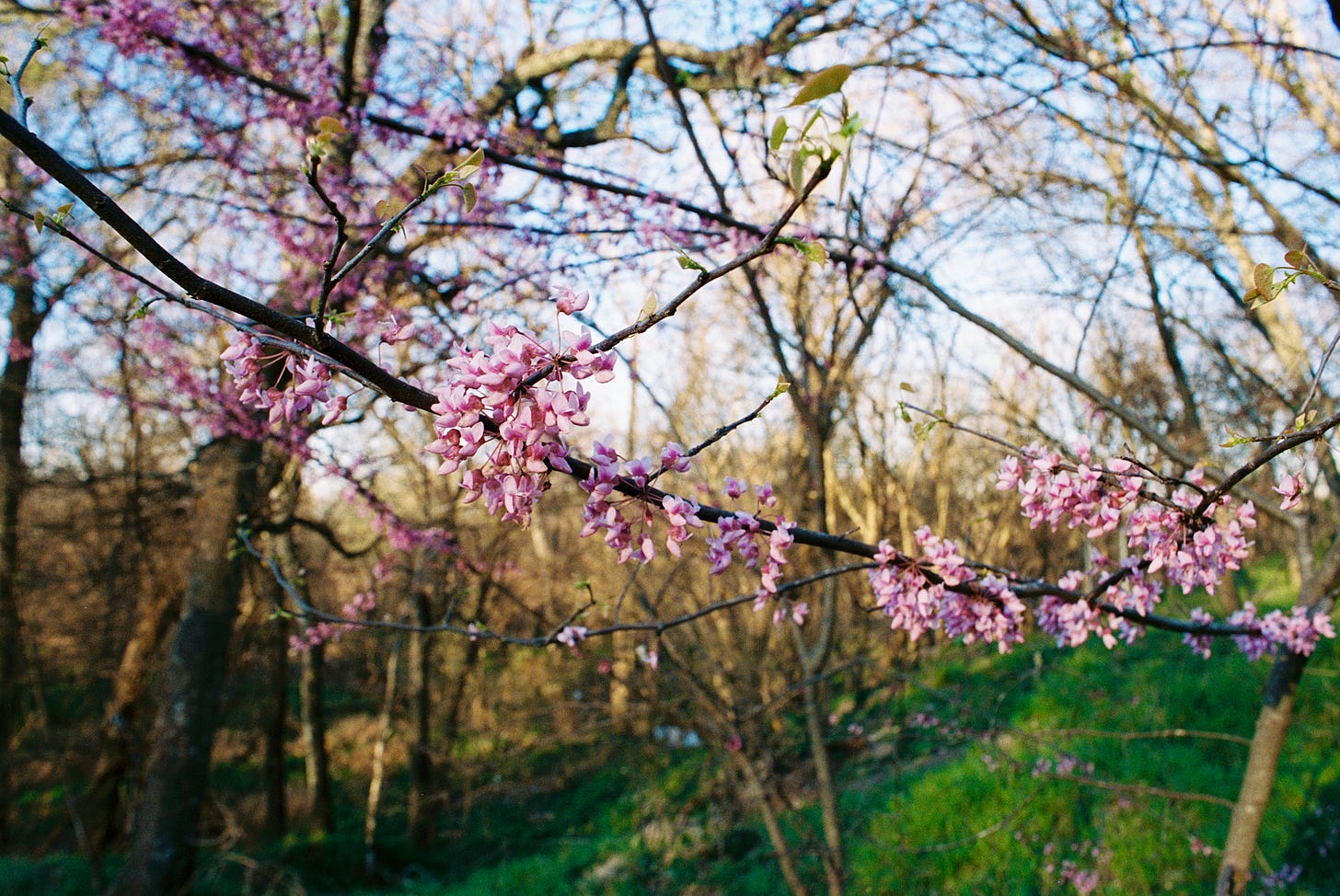
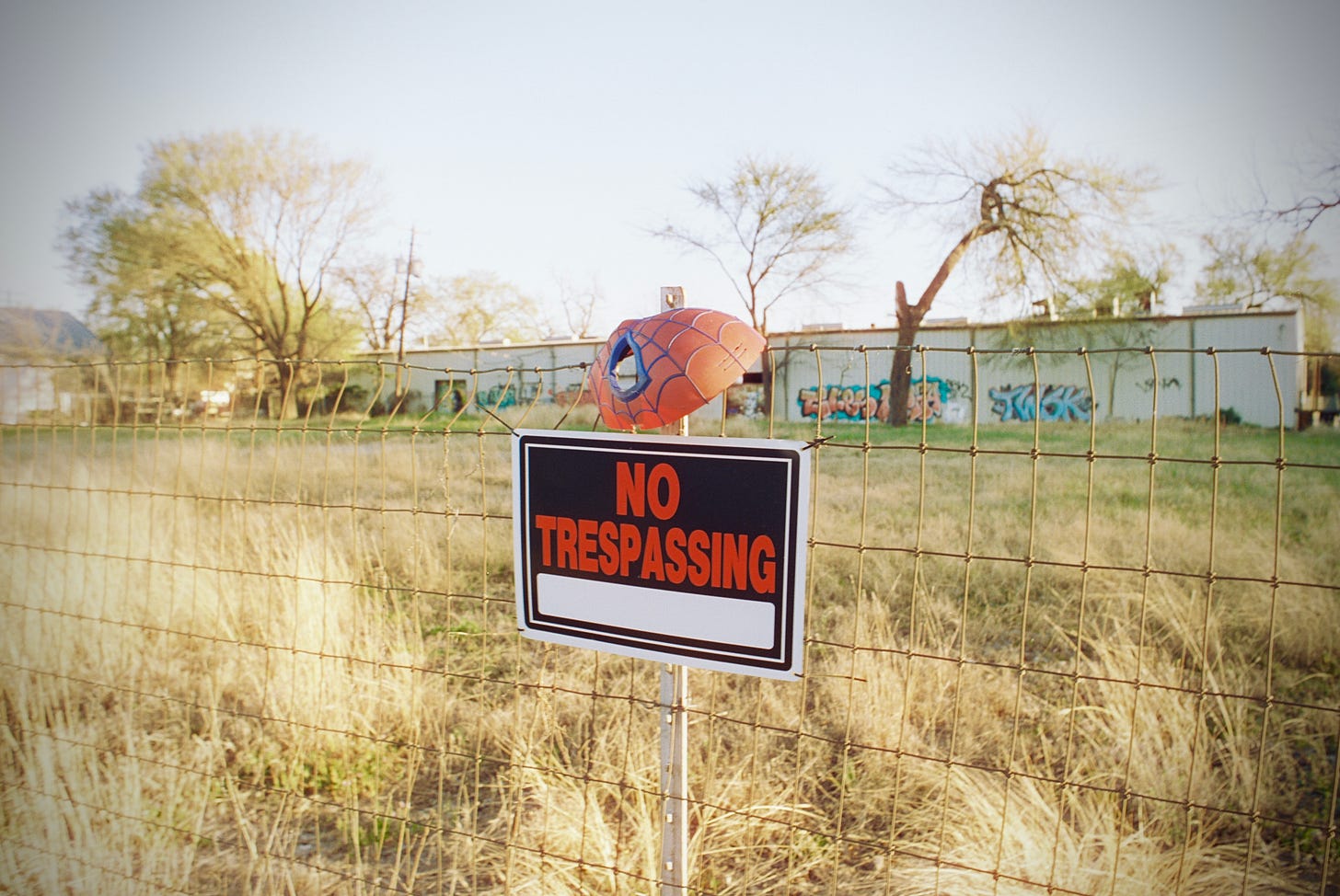
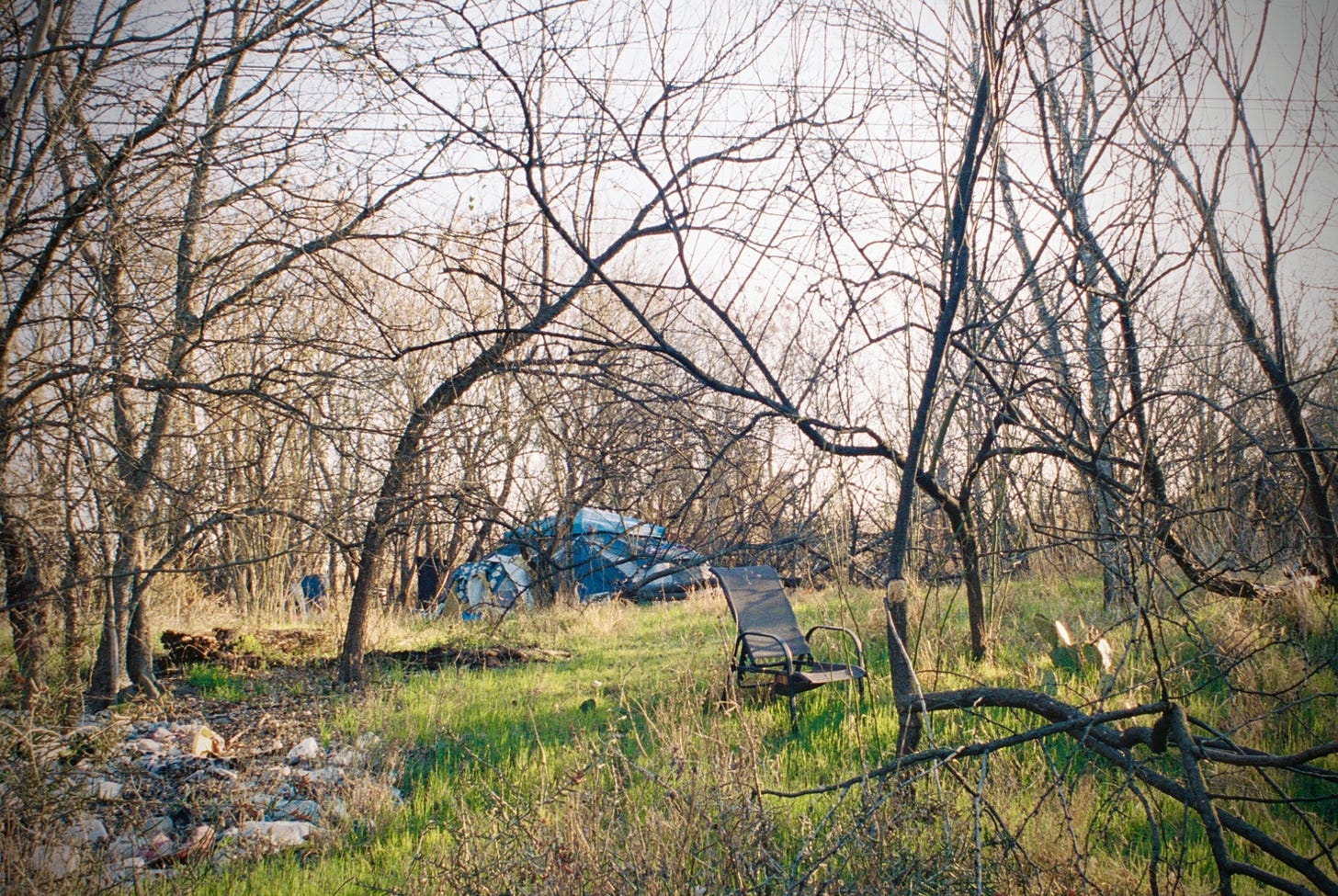



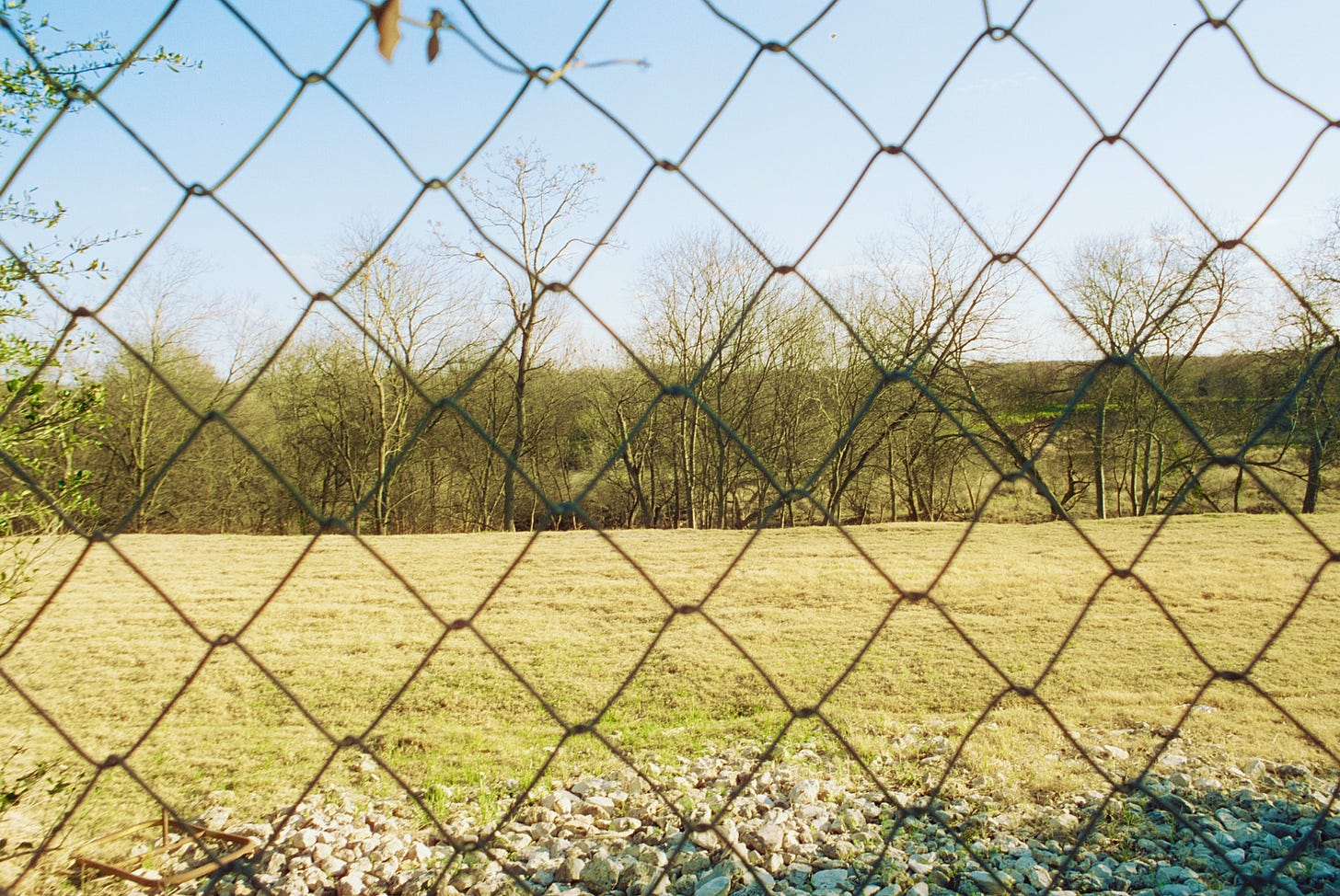


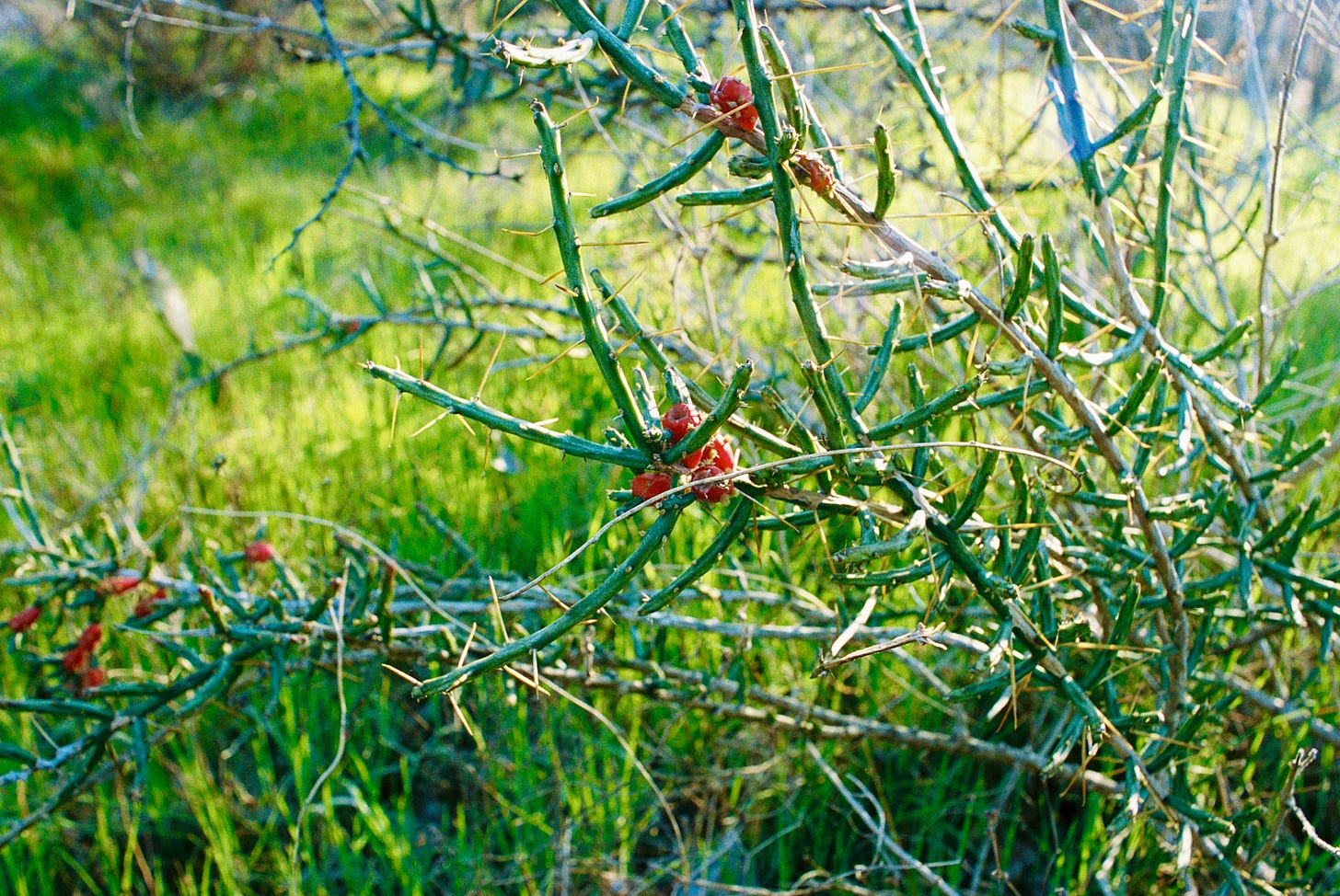

ugh! reader note, substack required me to login to comment, and wanted a password or connection through email and wanted me to update my profile. all needless complications getting in the way of my pleasure in reading your column